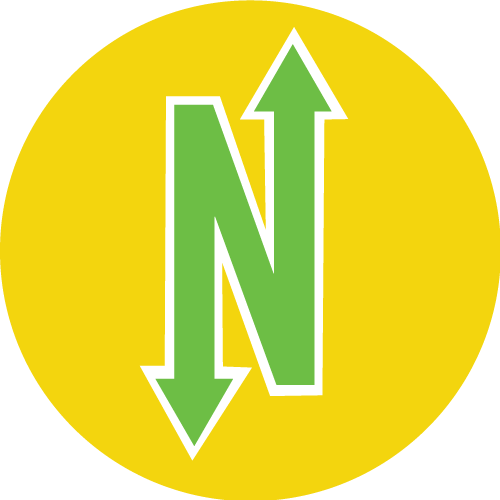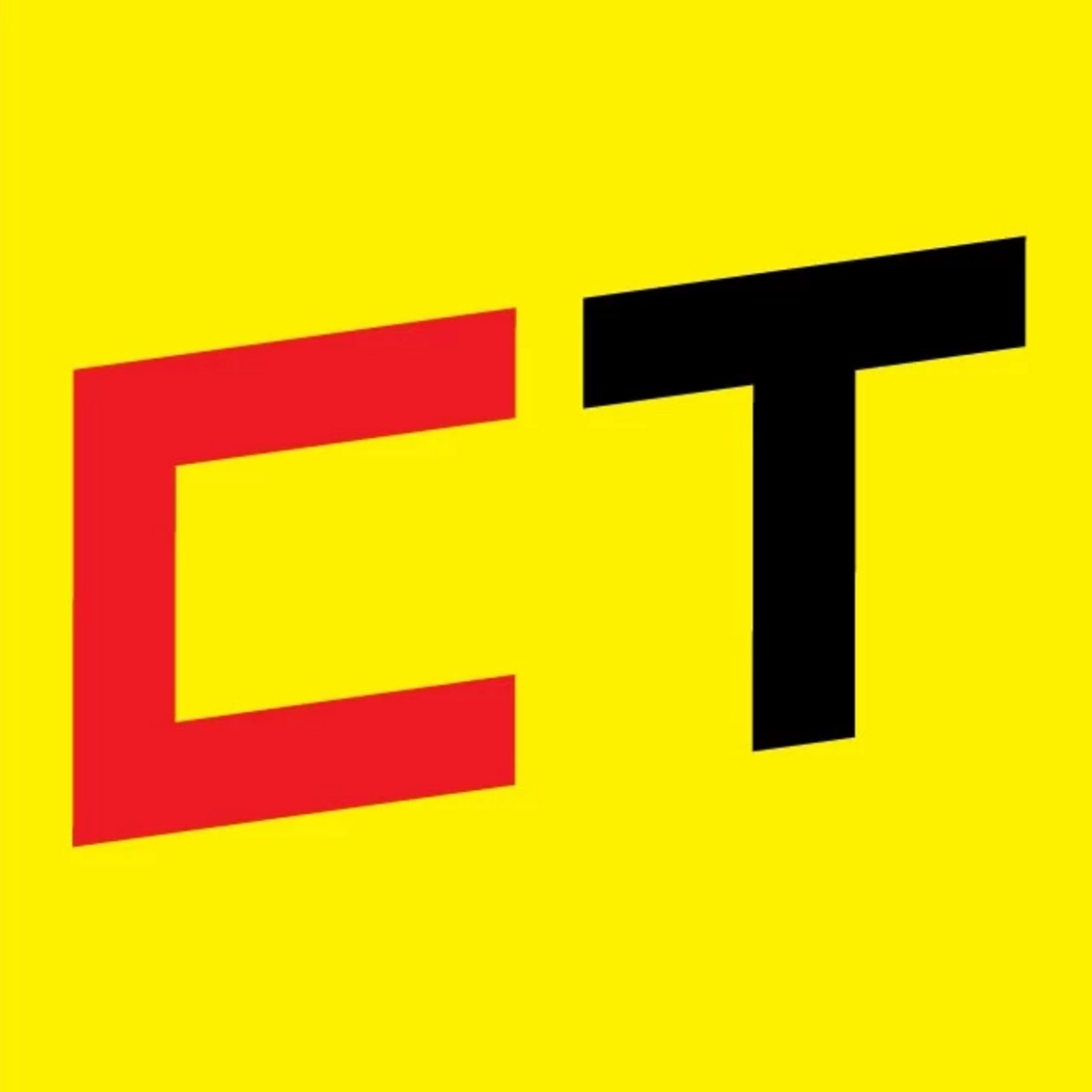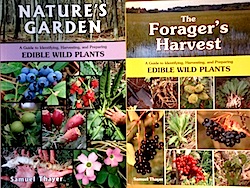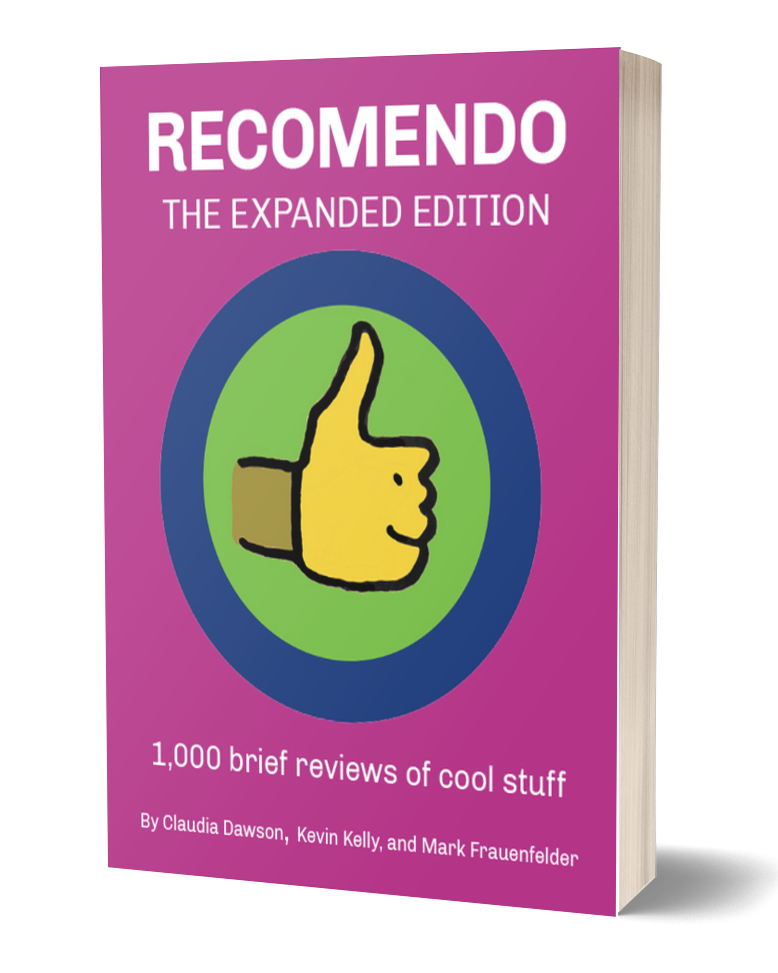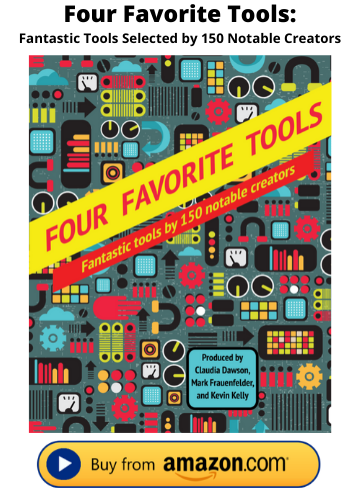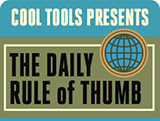11 January 2026
Retro Recomendo: Career
Recomendo - issue #496
Our subscriber base has grown so much since we first started nine years ago, that most of you have missed all our earliest recommendations. The best of these are still valid and useful, so we’re trying out something new — Retro Recomendo. Once every 6 weeks, we’ll send out a throwback issue of evergreen recommendations focused on one theme from the past 9 years.
How to do great work
Last year, Paul Graham, a renowned programmer, entrepreneur, and venture capitalist known for co-founding Y Combinator, wrote an essay titled “How to Do Great Work.” He covered a wide range of topics, from choosing what to work on to cultivating originality. This week, I came across Peter Schroeder’s terrific visual representation that maps out the main ideas from Graham’s essay. It’s useful even if you don’t read the essay. — MF
Productive meetings
This 1-minute video by John Cleese is all you need to know about how to have productive (vs unproductive) meetings. One minute! Applies to zoom meetings, too. — KK
A guide for daily “professional” interactions
How to professionally say is a list of things you might feel like saying at work — along with a more professional alternative for how to express them. Example: Instead of saying “That sounds like a horrible idea,” you can say “Are we confident this is the best solution, or are we still exploring alternatives?” While some of the phrasing might not flow naturally for me, I’m inspired to adopt more neutrality and directness in my professional language. — CD
Good advice for applying for jobs
I am a big fan of YouTuber Ali Abdaal. In this video about Resumes he condenses a whole book of information presenting the best advice for applying for a job into 30 minutes. It’s the same advice I gave to my kids when they started working. Whether you are looking for a job, or hiring someone, this is worth your time. Forward it to a young person. — KK
A Two-Minute Burnout Checkup
This Two-Minute Burnout Checkup helped me understand the primary factors of chronic stress and burnout. I can sense physically when I am nearing burnout, but before this I didn’t understand that it’s more than just feeling exhausted. This checkup evaluates six sources of chronic stress: workload, values, reward, control, fairness, and community. You rate your level of stress from 0–10 for each one and add up the numbers to get a score out of 60. This could be especially helpful if you track your score over time. Here’s a link to the survey. — CD
Ryan Holiday’s career wisdom
Writer and entrepreneur Ryan Holiday has had a varied career, from Hollywood agent assistant to marketing director for American Apparel. He’s put together a list of 37 pieces of hard-fought career advice that’s useful for anyone who works. Examples:
- Find what nobody else wants to do and do it. Find inefficiency and waste and redundancies. Identify leaks and patches to free up resources for new areas. Produce more than everyone else and give your ideas away.
- Always say less than necessary. Saying less than necessary, not interjecting at every chance we get — this is actually the mark not just of a self-disciplined person, but also a very smart and wise person.
- Your creative output, your personal relationships, and your social life—balancing all three is impossible. You can excel in two if you say no to one. If you can’t, you’ll have none.
- When people compete, somebody loses. So go where you’re the only one. Do what only you can do. Run a race with yourself.
— MF
01/11/2609 January 2026
Book Freak #192: Arrow
The Power and Poison of Story
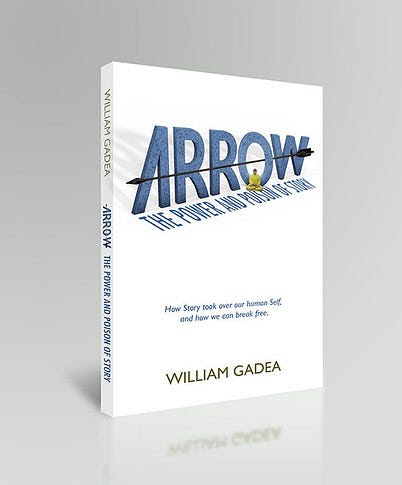
Drawing from neuroscience, evolutionary biology, and Buddhist philosophy, Arrow explores how storytelling became humanity’s defining superpower, and reveals how the stories we tell ourselves about ourselves can either liberate or imprison us.
Core Principles
We Are Story Animals
Different cognitive faculties — consciousness, emotion, episodic memory, mental simulation, language, and theory of mind — converged in human evolution to create a new ability: storytelling. This capacity became a tool for communication, a mechanism for self-regulation, and a means of social connection that shaped who we are.
The Self Is a Narrative Construct
What we call our “self” is not an objective reality but a story we continuously tell ourselves. Our identity comprises interconnected narratives: our origin story, our present identity, and our anticipated future. As Gadea writes, “Story is a tool that became its inventor. What we call our Self is a Story.”
Story as Medicine and Poison
The book’s title references a Buddhist parable about a monk struck by a poisoned arrow. Like that arrow, our storytelling ability is dual-natured — it enables powerful human connection and meaning-making, but it can also foster discontent, self-deception, and suffering when we forget our stories are just stories.
A Path Beyond Narrative Dependency
Rather than abandoning stories entirely, Gadea suggests developing a different relationship with them — constantly remembering that they are constructions rather than fixed truths. This awareness opens a pathway to being steadier, stronger, more connected, and more content.
Try It Now
- Notice one story you’re telling yourself right now about your life (e.g., “I’m not successful enough” or “Things always go wrong for me”).
- Write it down as if it were a plot summary for a movie about someone else.
- Ask yourself: “What evidence would I need to write a completely different story about the same events?”
- Practice saying to yourself: “This is a story I’m telling, not necessarily the truth.”
- Notice how your emotional relationship to the situation shifts when you hold the story more lightly.
Quote
“The stories we don’t pay enough attention to are the stories we tell ourselves about ourselves. My practice isn’t about losing those stories — it’s about constantly remembering that they are just stories.”
01/9/2608 January 2026
Busiest Air Routes/Best Headphones/TSA + Staples
Nomadico issue #187
Busiest Air Routes of 2025
I’ll spare you all the “best travel destinations of the year” and “where to go in 2026” slop that you’ve probably seen all over. Here’s a listicle based on real data: the busiest air routes of the past year. One glance at this list will make it obvious that the supposedly busy flight paths in North America have nothing on Asia. New York to London barely cracked the top 10 and that route had 3.97 million seats sold compared to 6.83 million for #1 Hong Kong to Taipei. Seoul had 2 of the top 5 (to Tokyo and Osaka) and there were 5.57 million seats sold for the short hop from Kualu Lumpur to Singapore. I’m guessing that Allah is responsible for the #2 route in the world: Cairo to Jeddah.
World’s Best Headphones
It’s hard for any normal person to judge “the best” over-ear headphones since few of us ever have the chance to compare a bunch of them side by side with the same music. Wired magazine did that though, with real audiophiles, and compared their blind test answers. Third place went to the most expensive (Apple Airpods Max) and second to the Nothing Headphones, but the one that came out on top had the lowest price of the six. That would be the Soundcore Space One Pro, currently going for just $149 on Amazon.
Better Guarantees From Vrbo
If you know a lot of people who book through Airbnb, you have likely heard at least a few horror stories about late cancellations by hosts, bad communication, or misrepresentations of listings. It might be worth taking a new look at Vrbo because they recently revamped their policies to become much more renter-friendly. Changes include active help when a hosts cancels (90 days out even) and stricter “Premier Host” qualifications to highlight rentals without complaints. See the full story here.
TSA Pre-check at the Office Store
Don’t want to make a trip to the airport to get approved for TSA Pre-check? Well it turns out you can do it while shopping for Sharpies and ink cartridges: Staples has an arrangement with the government to approve you for the expedited TSA security lines in the USA. You might want to check with your credit card if reimbursement for this is one of its perks (and it’s included in Global Entry), but see the details here.
A weekly newsletter with four quick bites, edited by Tim Leffel, author of A Better Life for Half the Price and The World’s Cheapest Destinations. See past editions here, where your like-minded friends can subscribe and join you.
01/8/2607 January 2026
What’s in my NOW? — Magnus Ojala
A construction professional based in Sweden, currently working with residential projects. Interested in flow, systems thinking, and practical ways to ...
A construction professional based in Sweden, currently working with residential projects. Interested in flow, systems thinking, and practical ways to manage complexity at work and in life. Uses simple tools to stay focused, learn continuously, and protect long-term capacity. — Magnus Ojala
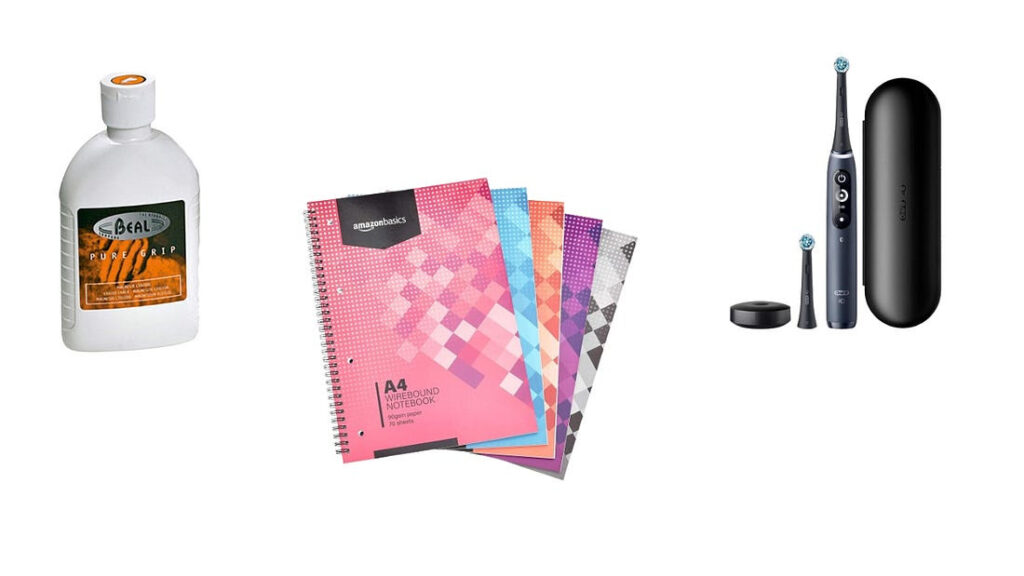
PHYSICAL
- Beal clean grip liquid chalk:Recommended to me by a more experienced lifter when I started weight training in 2010. Every time I’ve forgotten it since, lifting has felt like trying to hold onto the bar with soapy hands. One bottle lasts for years.
- Any A4 spiral notebook:
I’ve used an A4 spiral notebook to plan my weeks since 2014. One notebook per year, one page per week. Each page follows the same structure: a numbered list of ten projects or focus areas for the week. Not tasks, but the things that will compete for my attention. Seeing all ten on a single page gives me a realistic sense of capacity. If something is tied to a specific day, I simply write the weekday—like “Tue”—on that line. I sometimes add small circles next to an item to indicate how many pomodoros I want to spend on it. It’s a simple, manual system. It doesn’t help me do more—it helps me decide what actually matters this week. - Oral-B iO electric toothbrush:
The difference in feel between a manual toothbrush and an electric one is real. The difference between a standard electric toothbrush and the Oral-B iO feels just as big. You notice it immediately when you run your tongue over your teeth. Once you’ve gotten used to that level of clean, going back—when traveling without it—always feels noticeably worse.
DIGITAL
- Readwise (and Reader):
I’ve used Readwise since 2020. I’m currently on a +1,700-day review streak, with over 30,500 highlights—mostly from Kindle Paperwhite/Kindle app and Reader. What keeps me coming back isn’t the streak, but the habit it supports. Highlights resurface when I’ve forgotten them, often at exactly the right time. Readwise Reader has also become my default place for PDFs and (long-form) articles. It’s the best app I’ve found for turning things I read into things I actually remember. - A personalized Todoist setup based on Tiago Forte’s video series:
I’ve adapted my Todoist system around Tiago Forte’s approach to managing projects and commitments (from his excellent video series). Instead of treating Todoist as a task dump, my setup helps me distinguish between what I’m committed to and everything else. I find this framework far more useful than a generic inbox-to-zero workflow—the structure gives direction, not just an empty inbox. The method has become the backbone of how I actually work with Todoist.https://www.youtube-nocookie.com/embed/cg-29pZUFcs?rel=0&autoplay=0&showinfo=0&enablejsapi=0
INVISIBLE
Herbie, the bottleneck
From The Goal by Eliyahu Goldratt. In the story of Herbie, the slowest boy in a hiking group determines the pace of the entire line. Even if everyone else walks faster, overall throughput cannot exceed the speed of the bottleneck.
The insight is simple: system performance is governed by its constraints, not by the individual speed of its fastest parts.
01/7/2606 January 2026
The Wolves of Currumpaw / Sinatra 100
Issue No. 99
THE WOLVES OF CURRUMPAW – A TRUE STORY ABOUT LOBO, A WOLF FROM THE OLD WEST
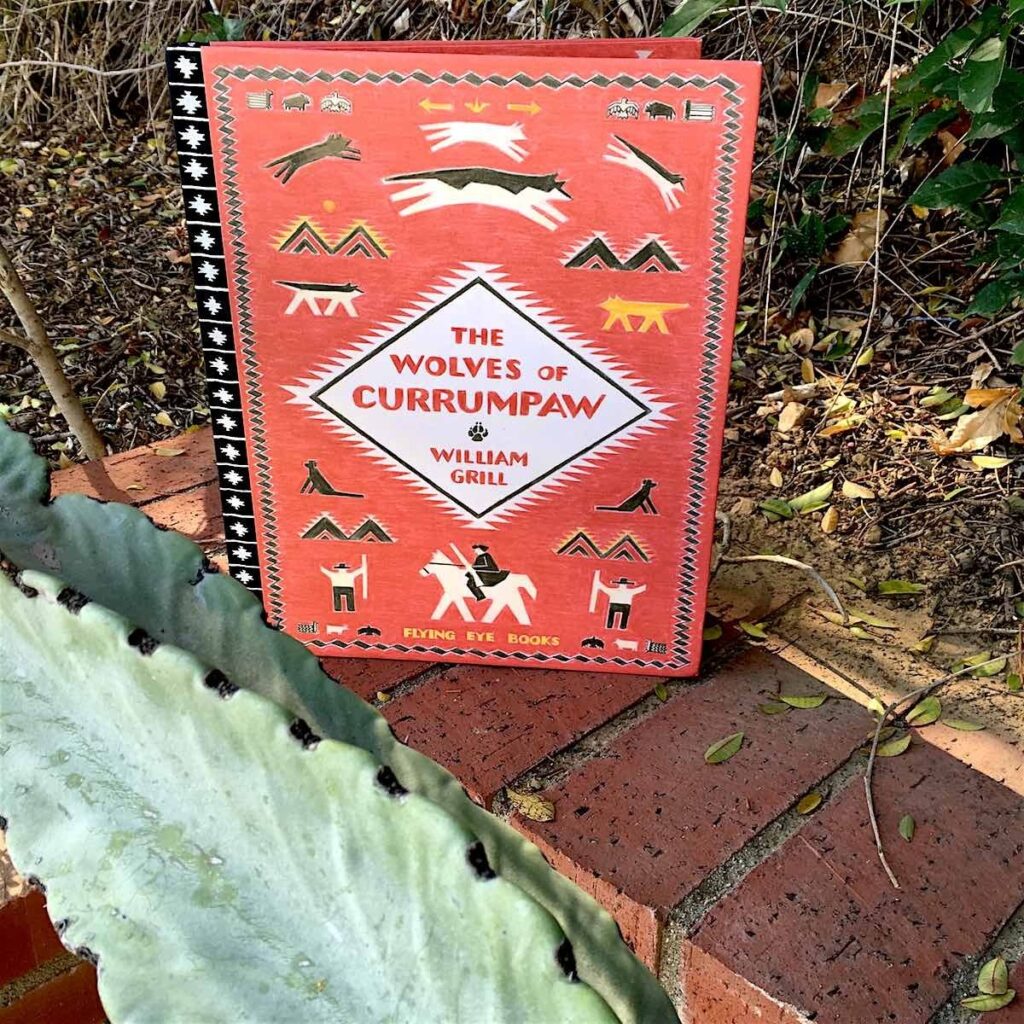
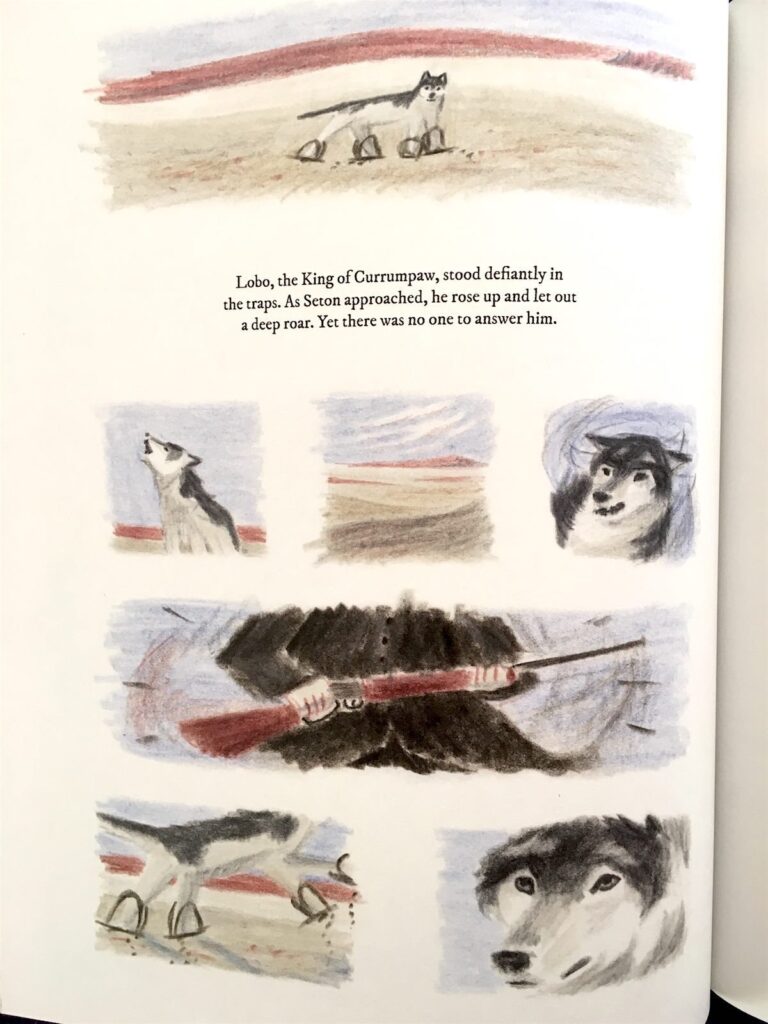
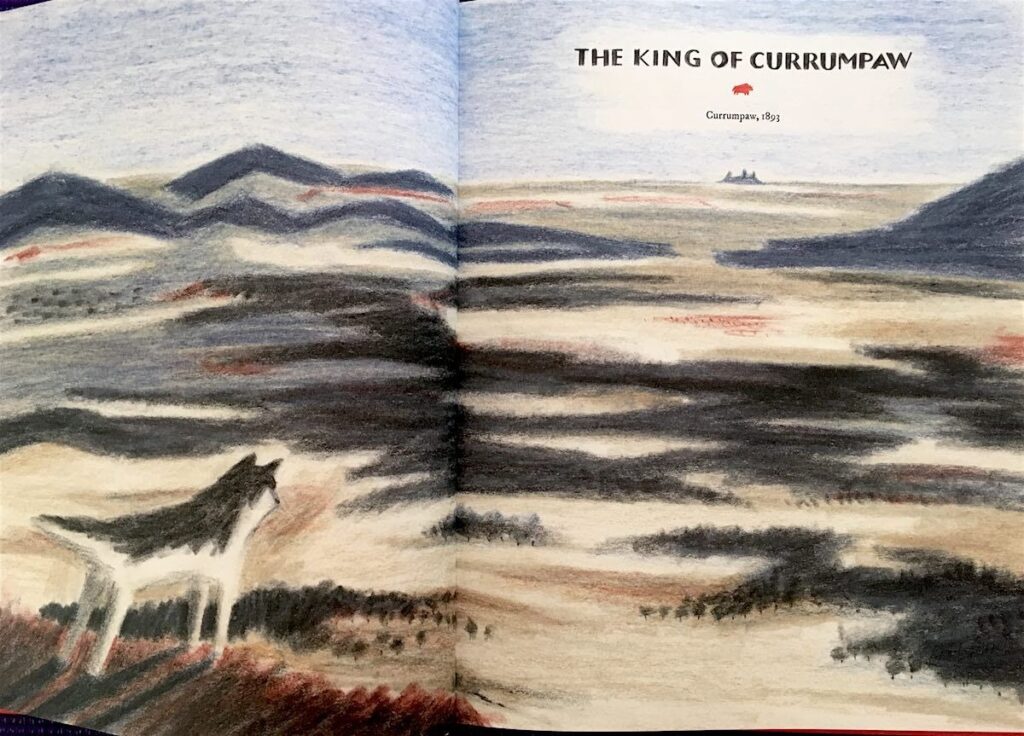
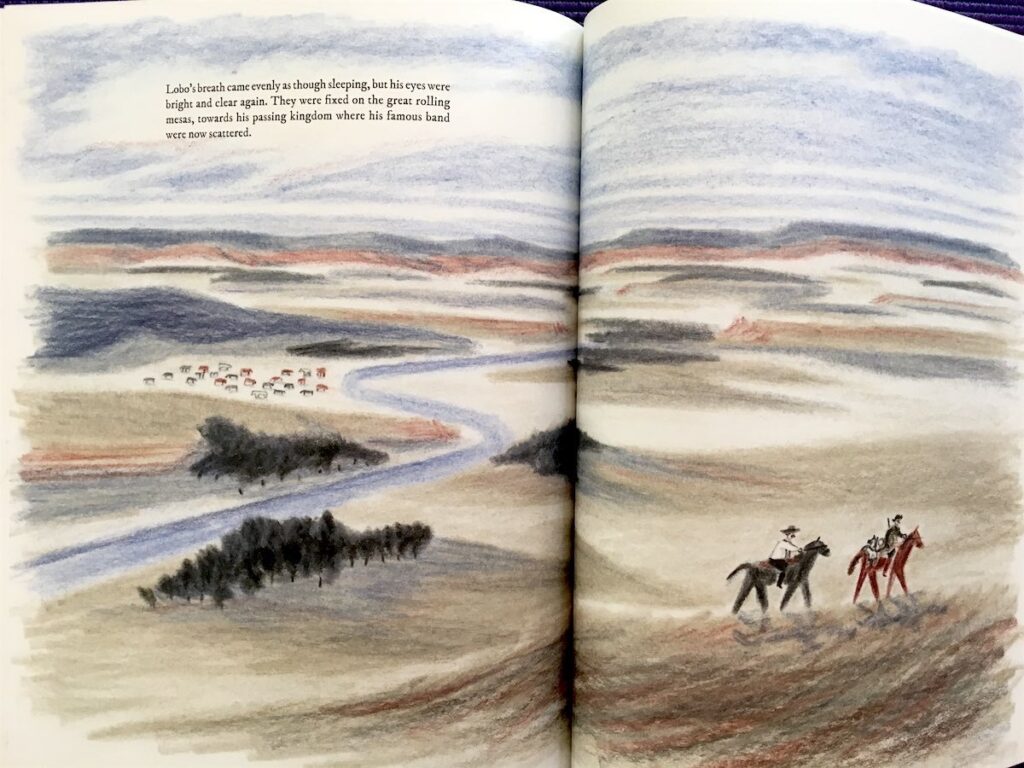
The Wolves of Currumpaw
by William Grill
Flying Eye Books
2016, 80 pages, 9.7 x 12.1 x 0.6 inches
In the early 1800s, half a million wolves roamed North America, but by 1862 settlers began pouring in from Europe and the landscape started to change. “These were the dying days of the Old West and the fate of wolves was sealed in it,“ begins The Wolves of Currumpaw.
The Wolves of Currumpaw, released today, is a true story about a wolf named Old Lobo, and a skilled hunter, Ernest Thompson Seton. Lobo was part of notorious pack of wolves in 1893 who, for five years, raided the ranches and farms of the Currumpaw Valley in New Mexico. Nobody was able to catch the stealthy wolf, and the locals began to think Old Lobo, or the King as they called him at the time, possessed supernatural charms. The locals finally offered $1000 to anyone who could catch him. Expert hunters set out to track him and hunt him down, but like the Terminator, Lobo couldn’t be killed – until Canadian-raised Seton came into town.
SPOILER paragraph: The story ends tragically, and might not be appropriate for more sensitive children. Seton does succeed in taking Lobo down, a section of the book that was hard for me to read. But then Seton has deep regrets and becomes a changed man. As a writer and sudden activist, Seton devoted the rest of his life to raising awareness about wolves. He was also one of the founders of the Boy Scouts of America.
Like William Grill’s other picture book, Shackleton’s Journey, Wolves is beautifully illustrated on thick textured paper with colored pencils. Wolves, which is based on Seton’s short story, Wild Animals I Have Never Known, is powerful, told as much by Grill’s narrative as it is by his illustrations. Grill has chosen two interesting, not commonly taught histories as the subjects of his first two books, and I look forward to seeing what he brings us next. – Carla Sinclair
A LUSCIOUS TOME OF FAMILY STORIES AND PREVIOUSLY UNSEEN PHOTOS TO CELEBRATE FRANK SINATRA’S 100TH BIRTHDAY
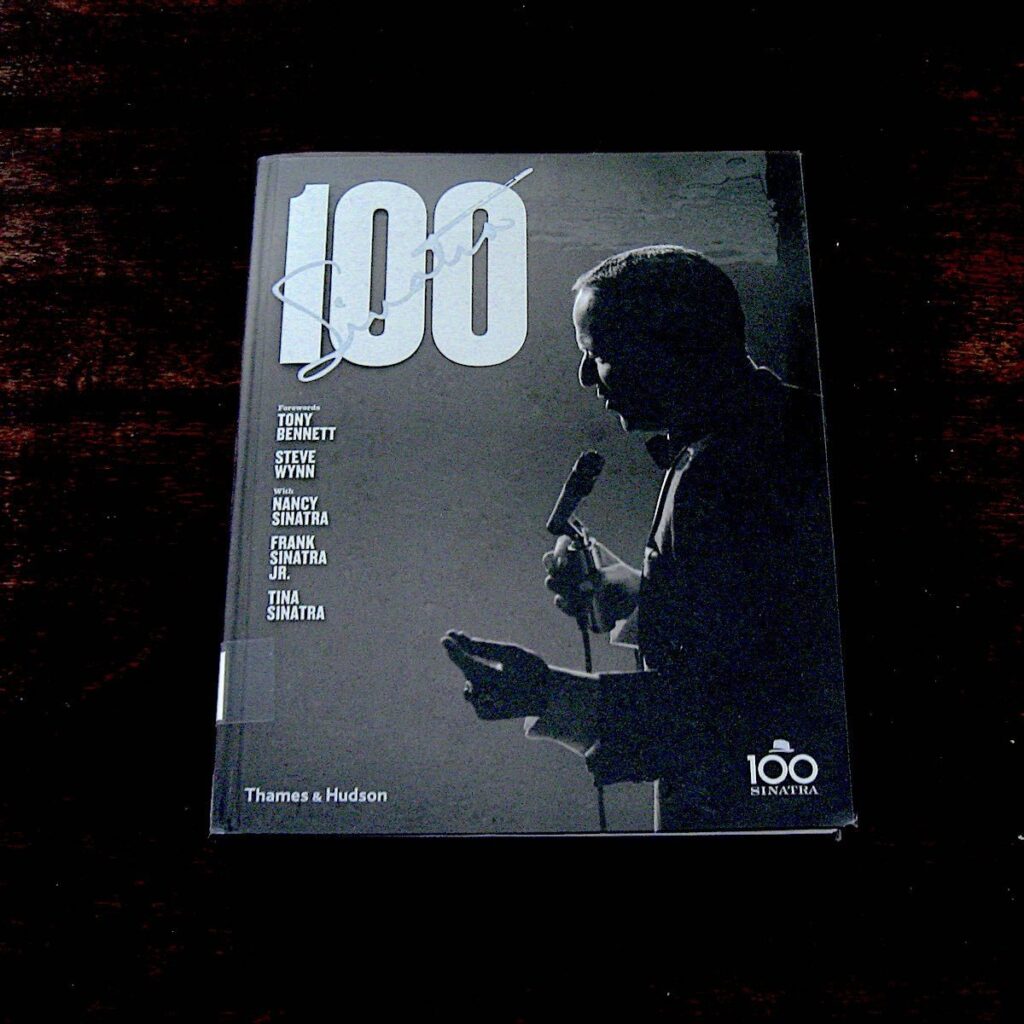

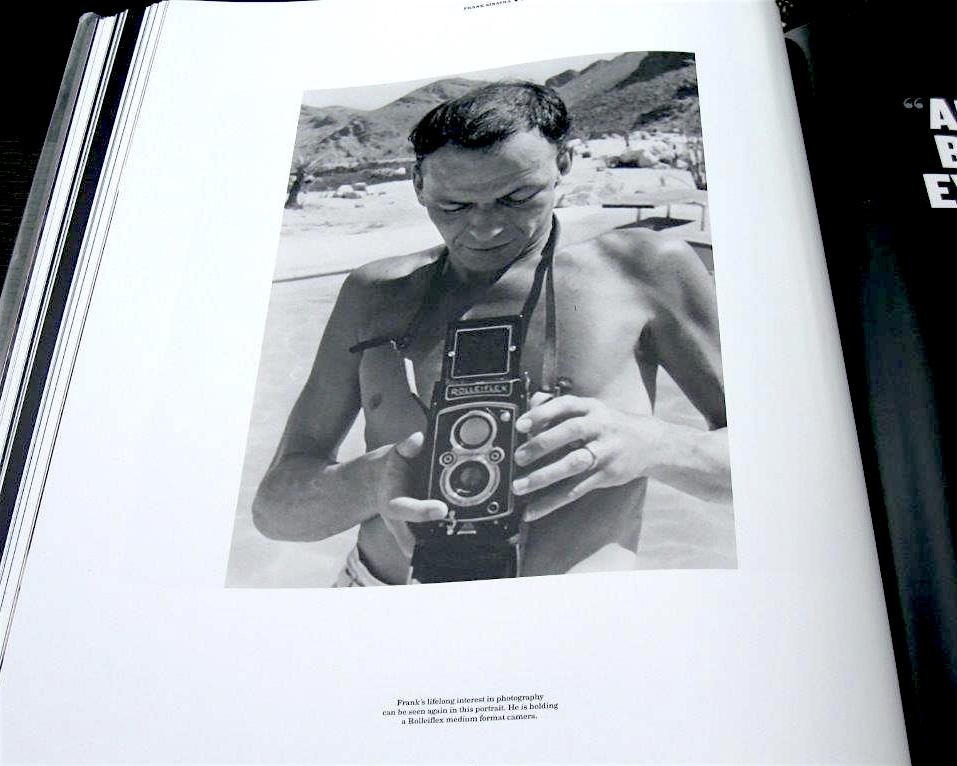


Sinatra 100
by Charles Pignone
Thames & Hudson
2015, 288 pages, 11.2 x 13.9 x 1.3 inches
Sinatra 100 encapsulates the legendary performer’s life through text and previously unseen photographs from the family archives as well as classic images from various photo shoots. After forewords by two friends who knew him best, Tony Bennet and Steve Wyn, as well as an introduction by book author Charles Pignone, the book is broken into three long sections: The Voice 1915-1952, Chairman Of The Board 1953-1972, and Ol’ Blue Eyes 1973-1998. That leads readers into afterward sections by various family members and other items of interest.
Frank Sinatra, the man who would be known as “The Voice,” was born in Hoboken, New Jersey on December 12, 1915. Singing in his Dad’s bar led to a lifetime in music. The pages of that first section detail in photographs and text how difficult his early career was as well as his personal circumstances. After having some very early success, by the early 1950s Sinatra could have easily been relegated to a brief footnote in history. It was those early days that taught him what loyalty meant to both himself and others.
While the early fifties were ugly, things changed fairly rapidly. Winning the Oscar on March 25, 1954 was a pivotal point in that turnaround and a small taste of what was to come. In Chairman Of The Board 1953-1972, that turnaround is thoroughly detailed. Sinatra quickly became a box office superstar while his deal with Capital Records made him a major business success. His personal life was another matter as marriages came and went. All of this is detailed in both text and pictures though it is the pictures that really tell Sinatra’s story by way of Hollywood movie sets, recording studios, award events, and more.
The final section, Ol Blue Eyes 1973-1998, covers the later years of Frank Sinatra’s incredible life. He had found peace and had gradually returned to singing by way of touring. Along the way the awards and accolades came to him from a worldwide audience as he continued to entertain people everywhere. While the text is important, the pictures truly tell the tale and are the real story of the book. Often the photographs capture other well-known figures such as Orson Wells, Bing Crosby, Clark Gable, etc. As such the photographs not only give readers a glimpse back in time of Sinatra, they also serve to showcase other legendary talents and others who just happened to be in the right place at the right time to be immortalized. They serve as a window into history, not only of Frank Sinatra, but of our history and culture over decades of American life.
It is worth noting that the coffee table-sized book is very heavy. Beyond the sheer weight of approximately six pounds is the fact that the text in captions and elsewhere in the book is very small. The caption text is even smaller than the main text with the result being a very well done book that could be difficult to read for those who have eyesight issues. Published by Thomas and Hudson this tome is meant as an all-encompassing historical visual record to commemorate the singer’s 100th birthday. – Kevin Tipple
Books That Belong On Paper first appeared on the web as Wink Books and was edited by Carla Sinclair. Sign up here to get the issues a week early in your inbox.
01/6/2605 January 2026
Paper Cutting
Tools for Possibilities: issue no. 171
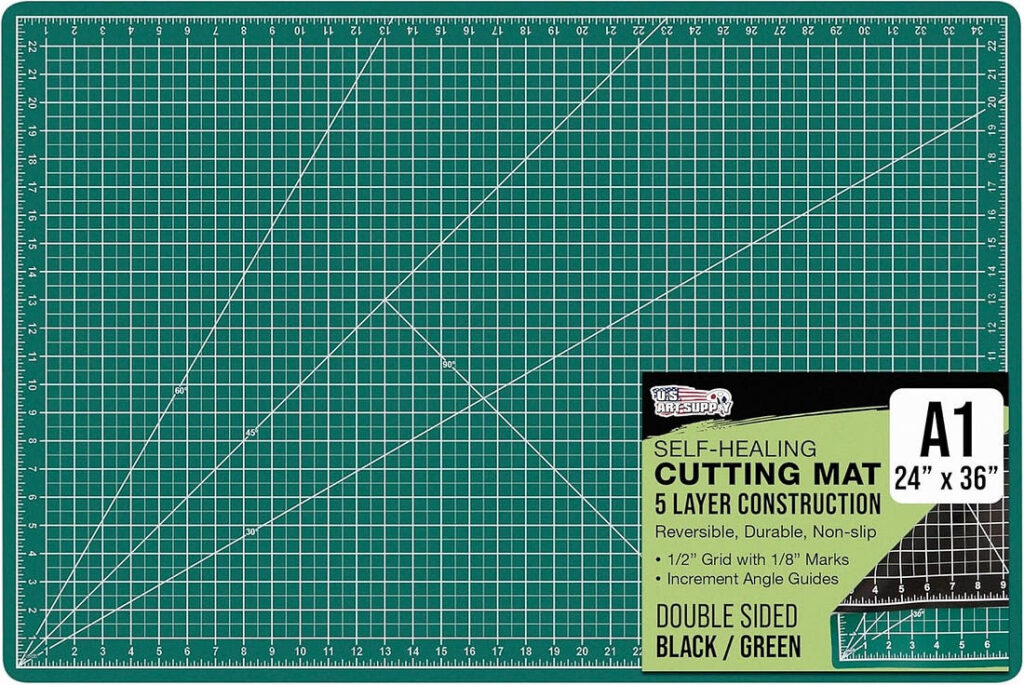
Optimal place to cut
You razor-cut things on this mat, and unlike other materials it won’t accumulate a field of cut marks to misguide your blade. The self-healing rubber keeps the surface uniformly smooth, clean, and firm. And protects your table. Get the largest one you have room for and can afford. A large mat also says: don’t pile stuff here. — KK
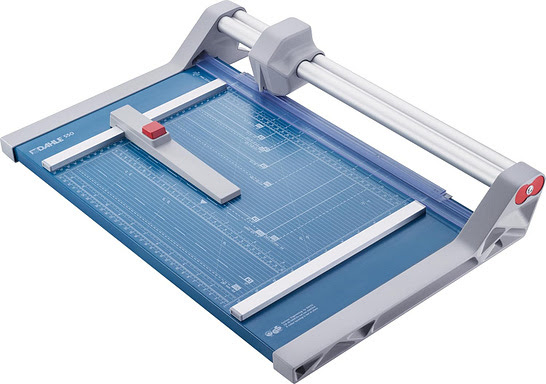
Self-sharpening paper cutter
Until a couple of years ago I had struggled with different inexpensive paper cutters, but I kept finding myself going to Kinko’s and using the cutters there. Then I got smart and jotted down the brand name, Dahle 550 Rolling Trimmer Paper Cutter, and bought one online.
What I appreciate most about this cutter is that I never have to change blades, or deal with dull blades, because it’s self-sharpening. The steel rotary blade contained within the plastic safety housing moves across a stationary blade that extends the length of the cutting platform. This action hones the rotary blade, which remains constantly sharp. It’s also set up for wall mounting, which is ideal in my home office layout.
One of the Dahle’s downsides is that the plastic plate that holds the paper down got dinged up — keep away from kids — causing the blade to run off the track if I’m not careful. Also, the next one I buy will be a larger model: The 550 is meant to cut up to 14 1/8-inch paper, but it’s awkward cutting anything over 8×10. — Andrew Heidrich
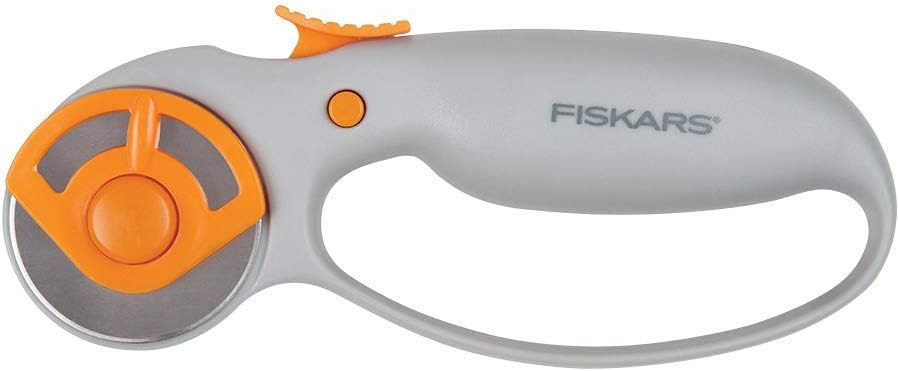
Better than razor blades
Rotary cutters aren’t new tools. It’s just taken me awhile to appreciate how great they are. The Fiskars Rotary Cutter replaces exactos for most heavy-duty cutting jobs in our household. It’s faster, surer, easier and therefore safer to use than razor blades. It will slice through paper, vinyl, cardboard, fabric, and foam board with ease and accuracy. I can only manage perfectly straight long cuts with a rotary cutter and straight edge. Cutting curves is buttery. Seamstresses can add pinking blades. The replaceable blade retracts when not in use; it can be side-switched for left-handers. When I think “cut” I reach for this tool. — KK
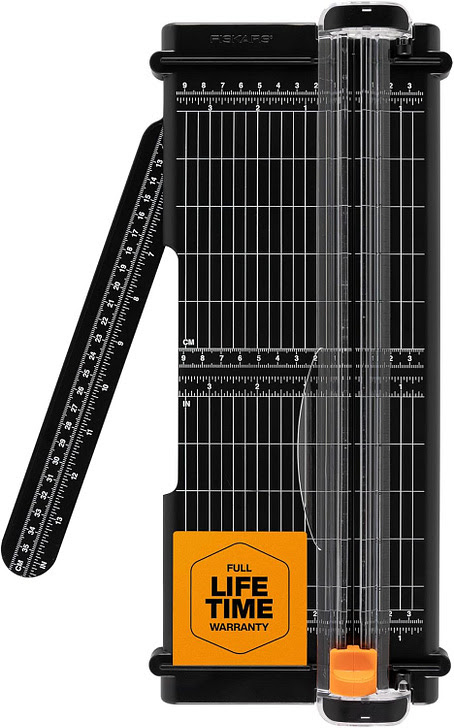
Safe paper trimmer
It is simply impossible to make a genuine straight, right-angle cut on paper using scissors, or even a razor blade and straight edge. The old guillotine paper cutter could deliver a clean cut, but at the risk of taking your fingers away. Fiskars, the scissors makers, invented a cutter with a tiny blade mounted on a hinged holder that zips through paper without any possible harm, even to the youngest children. It’s fast, accurate, and crisp. — KK
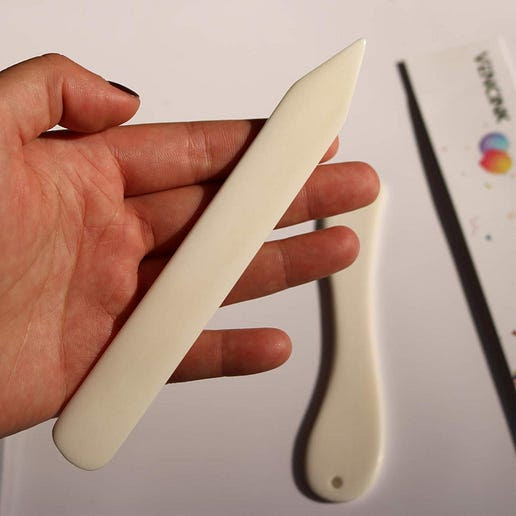
Paper scoring and folding
A classic bone folder is made of real bone, not plastic or Teflon, and resembles a fat, blunt-edged tongue depressor, rounded at one end and pointed at the other. With it, I can turn a digital print, piece of cardstock or watercolor paper into a professional-looking note or greeting card.
Pulling the pointed end alongside a straight edge and across the paper produces a subtle score that facilitates a perfect fold. Next, I fold the card very gently by hand along the score, and then stroke one of the short, straight sides of the bone folder along the score to flatten the rounded fold to a sharp crease.
When sending a letter that I want to look good, I make two quick strokes of the folder along preliminary hand folds to create folded edges that are sharp and square. Bone folders also can be used to burnish paper as it is glued to cardstock, album or scrapbook pages. They produce accurate and sharp folds and creases on origami papers as well as facilitate sculpting, architectural modeling or bookbinding with paper.
I recommend rubbing your bone folder with olive oil from time to time to avoid flaking or brittleness. Folders made of real bone are best, unless you wish to use a Teflon folder to avoid the slight luster sometimes created by the friction of a real bone folder. — Clifford Peterson
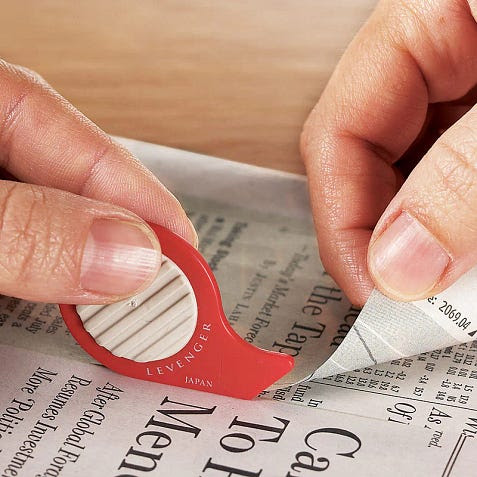
Safe, quick newspaper clipper
I like to clip items from the newspaper or magazines that are relevant to my clients and prospects. This tool makes that task simple — just grip between thumb and forefinger and trace the outline of the article you want to clip — you even leave the underlying pages intact! — Bruce Bradford
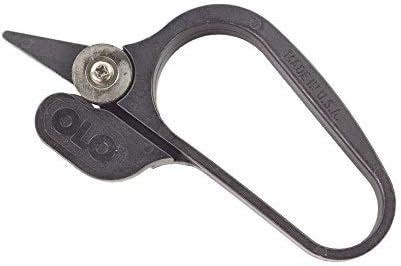
Perfect for cutting rolls
Two rotating wheels slice paper the way an open scissors does occasionally. Absolutely marvelous for cutting wrapping paper or making lots of long cuts. Also great for kids who don’t quite have the coordination to use scissors well. We keep ours in the gift wrap box. — KK
Once a week we’ll send out a page from Cool Tools: A Catalog of Possibilities. The tools might be outdated or obsolete, and the links to them may or may not work. We present these vintage recommendations as is because the possibilities they inspire are new. Sign up here to get Tools for Possibilities a week early in your inbox.
01/5/26ALL REVIEWS
EDITOR'S FAVORITES
COOL TOOLS SHOW PODCAST
WHAT'S IN MY BAG?
07 January 2026
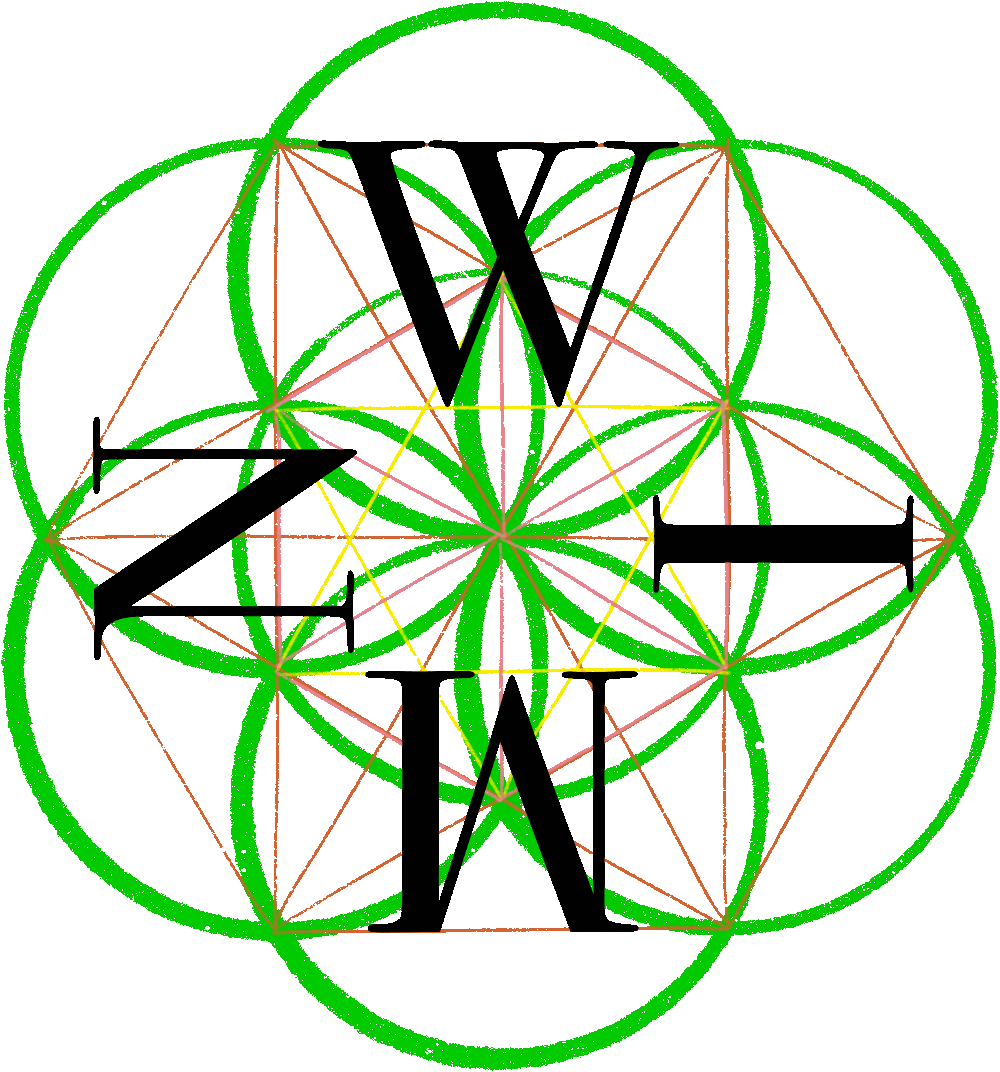
What’s in my NOW? — Magnus Ojala
A construction professional based in Sweden, currently working with residential projects. Interested in flow, systems thinking, and practical ways to …
ABOUT COOL TOOLS
Cool Tools is a web site which recommends the best/cheapest tools available. Tools are defined broadly as anything that can be useful. This includes hand tools, machines, books, software, gadgets, websites, maps, and even ideas. All reviews are positive raves written by real users. We don’t bother with negative reviews because our intent is to only offer the best.
One new tool is posted each weekday. Cool Tools does NOT sell anything. The site provides prices and convenient sources for readers to purchase items.
When Amazon.com is listed as a source (which it often is because of its prices and convenience) Cool Tools receives a fractional fee from Amazon if items are purchased at Amazon on that visit. Cool Tools also earns revenue from Google ads, although we have no foreknowledge nor much control of which ads will appear.
We recently posted a short history of Cool Tools which included current stats as of April 2008. This explains both the genesis of this site, and the tools we use to operate it.


